The Character of Cricket Read online
Page 10
Until recently the office was a caravan, but now it too is a permanent affair. In a sense it is a cricketing equivalent of the House of Lords. A House of Lord’s perhaps. When I looked in I found Ronnie Aird, former secretary and president of MCC, and the club chairman Ronnie Ford, a former assistant secretary of MCC, and the club secretary, Veronica Lloyd, who also used to work at Lord’s, as Ronnie Ford’s assistant. Earlier in the week I had spoken to S.C. ‘Billy’ Griffith, another ex-assistant secretary of MCC and recently retired as chairman of Arundel. I had hoped to see him at Arundel but he was, sadly, unable to be there, his mobility much restricted by a long debilitating illness.
These Lord’s emeriti, together with Colin Cowdrey, Eddie Harrison, the Hon. Sec. of the Sussex Martlets, and the Duchess herself, are the people who have kept cricket going at Arundel in the manner that Duke Bernard would have wished. When he died in 1975, the title and the castle passed to his cousin, a career soldier of sixty who had never lived at Arundel and had little discernible interest in cricket. Lavinia, the Dowager Duchess, was determined that the cricket should continue and convened this select group of old bold cricketing folk to make sure it did.
The plan was to form a non-playing membership and to bolster the money from their subscriptions with sponsorship wherever possible. The scoreboard, for instance, was presented by Benson and Hedges. In 1985 there were just under two thousand members entitled to the dark blue club tie with its single red ‘N’ motif. Each member pays ten pounds a year, a husband and wife fifteen. There is a hard core of three or four hundred locals and the rest are scattered worldwide.
For this particular game – Lavina Duchess of Norfolk’s XI against the Barbados Wanderers – there was a tiny scattering of spectators, their cars ranged around the ground while they sat alongside mainly in their own deck chairs (the present policy is to encourage people to bring their own seats!). The weather was iffy and it was mid-week so this was hardly surprising. Normally they would expect a couple of hundred. For the annual match against the foreign tourists several thousand turn up, stretching Arundel’s slim resources and demanding all the canniness and experience built up during those years at cricket HQ.
All in all Arundel puts on over forty games a year, ranging from such serious stuff as the Duchess’s XI against the Australians, Ireland or Combined Services, through the Martlets’ games where the opponents would be such teams as Free Foresters, Kenya Kongonis or Hampshire Hogs, to the Estate XI which plays village cricket.
Over in the pavilion Ronnie Ford bought pints all round and showed off some of the pictures of great moments in Arundel’s past. The George Cox benefit in 1951 with a photograph of G.H.G. Doggart, Gubby Allen and the Duke. The famous Duke of Edinburgh’s XI versus Duke of Norfolk’s XI in 1953 when Edinburgh clean bowled Norfolk and 25,000 people came to cheer. There is a photo of Prince Charles when he came with his team from HMS Norfolk, and a Lawrence Toynbee painting of the Duke padded up and looking quizzically bellicose, the artist just behind. Like so many pavilions, Arundel has its own poem. This one, composed in 1936 by Peter Wood, begins:
Beneath the stately Dukely trees
His Grace’s peasants on their knees...
and ends:
The rest all cried ‘A batsman true!’
But then the Duke had told them to.
Lunch was delicious quiches and salads and raspberry pudding, with players down one end of the pavilion and members at the other. Then it rained, and the players stood and gazed out at the grey and one couldn’t help wondering why West Indians should bother to come all this way to be rained on. The Barbados captain was P.D.B. Short, a sprightly 59-year-old who had been Chairman of the West Indies Board of Control and had the most wonderful white Jimmy Edwards moustaches.
As there was no play I settled down with the old scorebooks. Wonderful reading for a wet afternoon. One or two of the old matches were in beautiful copperplate which must, thought today’s two scorers, Karen Marshall and Elizabeth Bisset, have been copied in after the event. Too perfect otherwise. Every match shows Duke Bernard, identified simply as ‘His Grace’. His abilities never matched his enthusiasm, poor fellow. Time and again he is out in single figures or bowls without a wicket. Still, neither Len Hutton nor F.S. Jackson troubled the scorers when they came. The real heroes of the pre-war years were men like the Crawleys, Aidan and Cosmo; Alec Douglas-Home, then Lord Dunglass; and J.C. Masterman, author of one of the best of all Oxford novels, Provost of Worcester College, a mandarin figure who I remembered interviewing me for a scholarship and deploying halfmoon glasses to terrifying effect. The pages reeked of creamy flannels and Harlequin caps. Major Staniforth’s XI; Captain Hope’s XI; Lord Eldon’s XI; His Grace’s XI versus the 3rd Battalion, the Grenadier Guards. The Duke must have enjoyed the time his team beat a Sussex XI by one wicket at 6.30. He got a wicket, too. Every time a ‘palpable catch’ was dropped it was recorded with a ‘c’ in the batsman’s score and the bowler’s analysis. Not many palpable catches the day Aidan Crawley made 147 in 55 minutes against Lord Eldon’s XI. Nor next day when he made 164 in 77. The names! Mr Maxwell Scott, Captain Disney Roebuck and Mr De la Bere, all of whom played in Colonel FitzClarence’s XI.
And His Grace, fielding, always, at mid-off.
The second the rain stopped the players were back on the field. No nonsense here about bad light or a slippery outfield. From the pavilion the ground looked a picture – a sylvan oval with not a building in sight. (There are loos out there, ugly corrugated iron ones, but they are hidden away in the rhododendrons.) Just opposite there is a cut in the trees, ordered by Duke Bernard, who felt that the ground was too enclosed and claustrophobic. The view stretches away across the flat plain of the Arun valley to the Downs beyond. It is a master’s touch, the final flourish of the brush.
I never saw the fifteenth Duke play cricket, but as a reporter I watched him mastermind the Investiture of the Prince of Wales at Caernarvon. He did behave preposterously at times. I remember Nick Tomalin at a press conference once calling out from the back, ‘Could you speak up? We can’t hear what you’re saying.’
‘Well,’ riposted the Duke, ‘I can’t hear you either.’
The press corps found him amusing, not always intentionally, but I don’t remember anyone disliking him, and his sense of style and his eye for detail were unsurpassed. Both are apparent at the Arundel ground, a singularly beautiful place and an apt memorial. The traditional convention always was that His Grace got one free run. Once, the town’s fast bowler, a local coal heaver, forgot the rule and bowled him for nought. The Duke thought it as funny as anyone, but if there is a lingering wistfulness about Arundel and His Grace’s ghostly presence it is a slight sadness that he so seldom managed better than the forlorn entry: ‘His Grace... b. Captain Foster 1.’
Grace Road, Leicester
‘Not easily accessible to the casual spectator,’ wrote Yardley and Kilburn about Leicester’s Grace Road ground just after the war, and it has become no more accessible in the intervening years. For a long time the county played at the Aylestone Road ground, much nearer the city centre, but this was severely blighted when the local electricity works was built next door. Black gritty dust fell all over the ground, making flannels grimy and ruining Norman Yardley’s egg and tomato sandwiches; and the cooling towers, which have now been blown up, made everything impossibly damp. During the war the Germans dropped a couple of bombs on the main stand. Leicester have only played three games there since the war – two in 1957 against Hampshire and Derby, and one in 1962 against Cambridge University.
You pass this ground, with its timbered Victorian pavilion, on your way up to the county’s present home. It is a long trek on foot from the centre of town, and the citizenry of Leicester were very hazy about how to get there. So it took me some time to get my bearings. One old codger even tried to get me to go to the old Aylestone Road ground, where I would have been lucky to see anything more exotic than the Leicester Electricity Sports and Social Club ve
rsus Narborough and Littlethorpe or Broughton Astley.
It was my first joint excursion with Paul Cox, the illustrator, and it was interesting to go with someone who had studied architecture and had a trained eye. ‘Blood and bandage,’ he said, eyeing the Victorian extravagance of the Grand Hotel. ‘Blood and bandage’ is the ‘in’ phrase for that mixture of red brick and whiteish stone which you often get in Victorian municipal building.
In the end we discovered that the best way to the cricket was a 36 or 37 bus. We had walked in the wrong direction, taking in a busy covered market outside the Corn Exchange. This is ducal country. The streets are named Belvoir and Rutland and Granby and there is a statue of John Henry, Duke of Rutland, which alleges that ‘the inhabitants of the county and town of Leicester during the 50th anniversary of his high office with universal consent caused this statue to be erected.’ A likely story!
The cricket ground used to be owned by the Dukes of Rutland but was bought from them in 1878. The family does not seem to have been closely connected with cricket since then except for a year in the thirties when the ninth Duke was president of the club. The present Duke does not appear to be much of a cricketer, though he is a considerable local figure.
The 36 passes along all the ducal streets, past the statue of John Biggs, an obviously eminent Victorian unknown to me, past Jokers Wine Bar and the Bricklayers Arms and the Mazid Tandoori Take Away and the gaol which looks like a child’s fort and the skating rink and the Granby Halls and the Leicester Football Club where the ‘Tigers’ play rugby. Shortly after a small field full of geese by the side of a canal our bus stopped and a woman passenger came upstairs and said, ‘If you want the cricket you get off here.’
There was no sign of cricket. The house opposite the stop said ‘Knighton Fields Infant School – Nursery Annexe’, and we headed left until we saw the Lancashire team coach in the car park of an Everards pub called The Cricketers. Getting warm.
It was not a very attractive area. Small, rather mean terraced houses and drab factories and warehouses; ‘Glenfield Marketing: Importers and Wholesalers for the Pet and Aquatic Trades’ – did they deal in goldfish? On the corner of Grace and Millington Streets you could get ‘Hot and Cold Cobs’ from a café called ‘The Rumbling Turn’. A man in J and P Coats (UK) Ltd asked if we were interested in making a purchase.
Lancashire were batting by the time we got into the ground. They faced a total of 327. It was the first day of the Old Trafford Test, so Leicester were without Gower and Agnew while Lancashire were missing Allott. One extra Leicester man on the field was Jack Birkenshaw, who scored more than 10,000 runs and took over 900 wickets for the county.
Today he was back on home turf, umpiring in a white coat. Leicester has been a fertile nursery for first-class umpires, though oddly enough it is not necessarily the best players who make the most successful umpires. Dickie Bird, for example, probably the best known of all contemporary umpires, played for Leicester from 1960 to 1964. He scored a thousand runs in his first season but declined after that, ending with an average of only 19.21. His fellow Test umpire, David Constant, averaged just over twenty. Though he played less often than Bird, he did get a wicket – one for 36. Bird got nought for 22. Nobody at Leicester passed any comment on Bird as a player, but one man did venture of Constant: ‘Opening bat; slow, but useful to have around.’
But the most successful transformation from moderate Leicester player is that of F.M. Turner. Between 1954 and 1959 Turner had sixteen innings, scoring 196 runs for an average of 17.82. And he took three wickets for 223 with his leg spin bowling. As John Arlott has said, ‘He simply did not make the grade as a player.’ But in 1985 Mike Turner celebrated twenty-five years as secretary of the Leicestershire County Cricket Club. The successful modern club and the exceedingly well-appointed modern ground are very much Mike Turner’s babies.
It is not a beautiful ground. From the seating above the pavilion block you can see the city of Leicester in the distance, but from ground level the only visible buildings are rows of terraced houses and their back gardens. There used to be forty-eight great elms along two sides of the ground, but they were felled at the time of the Dutch elm disease. ‘All mature,’ says Mike Turner, wistfully, ‘and we lost the lot.’ The whitebeam and lime which replaced them are not yet a real substitute. At the car park end there are silver birches and mountain ash planted fifteen years ago. By the public lavatories there is a single weeping willow.
I entered by the George Geary stand, named after the great Leicester bowler who played from 1912 to 1938. The pavilion block is to the right. It has all been built since 1965, when the county bought the ground from the local education authority. The pavilion itself was opened on 25 June 1966 by the Lord Bishop of Leicester, who began his speech with the words ‘Pavilion’d in splendour...’
Compared with the old days it is indeed splendid. Jim Laker, the Surrey and England spinner, has recalled the old Grace Road in a little essay called ‘The Good Old Days’. The title is ironic. Describing a visit to the ground, he wrote that ‘it looked its usual broken-down shambles and it seemed quite incredible that those rickety, worn-out old steps which led into darkness to the leaky, spasmodic cold shower had not yet completely disintegrated. The changing-rooms remained indescribable.’
Today the facilities at Grace Road are by common consent the best in county cricket, apart from the Test grounds. In fact there was one year when it looked as if Leicester was going to stage a one-day international but, much to Mike Turner’s chagrin, the Test and County Cricket Board changed its mind.
Modern functionalism has meant few frills. The old weathervane with its ubiquitous flying fox is still there, and there are two flagpoles for the county standards. Otherwise it is simply a series of rectangles with plastic seats on top. The only odd building is the one they call ‘The Meet’. (You get the impression at Leicester that the only permissible pastime other than cricket is fox-hunting.) There is pub food and drink in the Meet, a good view from the big glass windows, but it looks like a Nissen hut and was described by one spectator as ‘a temporary structure that seems to have become permanent’.
In contrast to the contemporary austerity of the pavilion and executive suites there were deck chairs on hire at 25p a day. And flowerbeds ringed the pavilion end of the ground, filled with roses. In the summer of ’84, I was told by one of the older inhabitants, some people scattered tomato seeds among the roses and were putting the fruits in their sandwiches in August.
Just by the Meet I came across the secretary of the Enderby club, David Brown. Mr Brown hails from Lancashire, which is why every year when Lancashire are the visitors he takes three days off from his job with the Gas Board down the Aylestone Road. It was he who showed me the members’ bar and the dining-room, where they were offering a lunch of roast lamb and raspberries for five pounds a head, and recalled Hallam and Inman and the Indian summer of Tony Lock. Leicester have made quite a speciality of Indian summers. Lock performed prodigies for them after his career with Surrey had come to an end; Willie Watson made two thousand runs in a season after Yorkshire dispensed with his services; best of all, another Yorkshire reject, Ray Illingworth, captained the county to victory in two Benson and Hedges Cups, two John Player Leagues, and in 1975 the championship itself. That was the first time Leicester had pulled of the championship. All the victory pennants hang in the committee room next to Mike Turner’s office, along with the flag commemorating a Leicester game against I Zingari in 1850.
In the best tradition of all cricket fans of a certain age, Mr Brown lamented the good old days when ‘You had eleven or twelve hundred runs scored and still got a result at the end of the day’ and when ‘we had an old-style pub and an old-style landlord and the lads would come in and have toasted sandwiches and a few beers.’ He was also a little dubious about Mike Turner being awarded a club benefit. Mr Brown narrowed his eyes and wondered whether, despite Mr Turner’s manifest good deeds, this didn’t create a dangerous precedent.
I counted three stuffed foxes in glass cases around the ground and I dare say I missed a few. Their other souvenirs are more conventional. They have a good collection of caps, including some lovely old Leicestershire county caps – blue and maroon hoops from 1921 to 1929; blue, white and gold hoops in 1930. Much better than the plain modern ones. Also Lord Crawshaw’s Eton Rambler Cap. And George Geary’s cap and boots, the first boots I’d seen at a county ground. Very stout workaday boots with never a hint of an Adidas label. And there is the ball he bowled with when taking ten Glamorgan wickets for eighteen at Pontypridd. The Leicestershire blazer belonged to J. Shields, who batted 209 times for the county between 1906 and 1923 but only scored 1,307 runs for an average of just over eight. Not much of a bowler either. Nought for four. There is a flier for a county cricket bazaar at The Temperance Hall, and another announcing the contest between Twenty-Two of Leicester and an England XI which included Barlow and Hornby. And lots of Leicester ties: the Quorn Hunt farmers, the Grace Road Taverners and the Gentlemen of Leicester, and Hinckley Town and Mountsorrel Castle. One of the photographs shows Ray Illingworth presenting a sheepish-looking David Gower with his county cap after he had carried his bat for 135 against Warwick on Sunday 28 August 1977.
Outside by the roses Paul Cox was sketching two veteran stalwarts of the Ibstock Town cricket club, Jack Walker and Bill Ottey. Jack captained the second eleven; Bill used to go in number eleven for the first. He seldom got an innings because they were a bit good. One time they scored 492 for seven declared.
Jack used to work down the mine at the Bagworth colliery with Les Taylor, the fast bowler, and with his father.
‘You know Les’s breakfast the other day?’ he asked. ‘A pork pie, packet of crisps, and a pint of beer.’ They chortled, and then told me how a friend of theirs called Don Smith had been sitting by the sight-screen at the car park end when Keith Miller was batting for Australia. Apparently Miller hit a straight six and the ball bounced off the sight-screen and hit their friend Don on the head. They very much approved of Miller. They remembered one time when he caught the ball and then put it in his pocket. And another when he hid it in the pile of sawdust at the bowler’s end. And then there was the man in the Ibstock side who was hit in the box rather painfully, and while he was recovering one of the fielding side picked up his bat and hid it up his trouser leg. ‘Oh those were the things that made cricket characters,’ they said, bemoaning the lacklustre professionalism of the modern game.

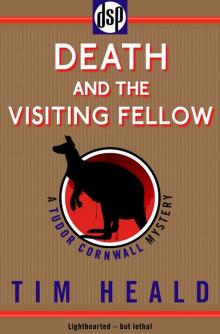 Death and the Visiting Fellow
Death and the Visiting Fellow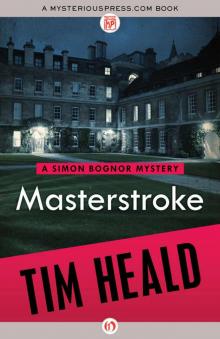 Masterstroke (The Simon Bognor Mysteries)
Masterstroke (The Simon Bognor Mysteries) Deadline (The Simon Bognor Mysteries)
Deadline (The Simon Bognor Mysteries)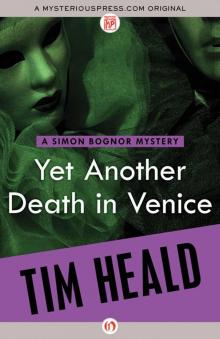 Yet Another Death in Venice (The Simon Bognor Mysteries)
Yet Another Death in Venice (The Simon Bognor Mysteries) Just Desserts (The Simon Bognor Mysteries)
Just Desserts (The Simon Bognor Mysteries) Let Sleeping Dogs Die (The Simon Bognor Mysteries)
Let Sleeping Dogs Die (The Simon Bognor Mysteries)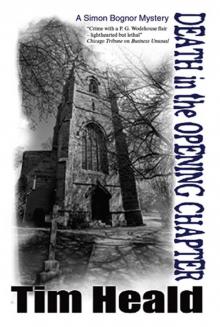 Death in the Opening Chapter
Death in the Opening Chapter Blue Blood Will Out (The Simon Bognor Mysteries)
Blue Blood Will Out (The Simon Bognor Mysteries)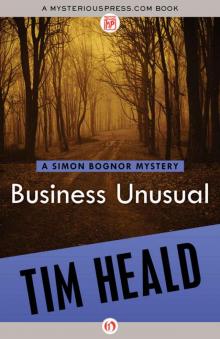 Business Unusual (The Simon Bognor Mysteries)
Business Unusual (The Simon Bognor Mysteries)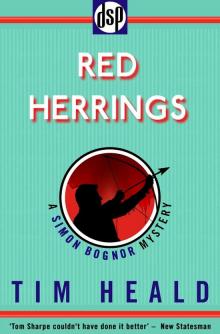 Red Herrings
Red Herrings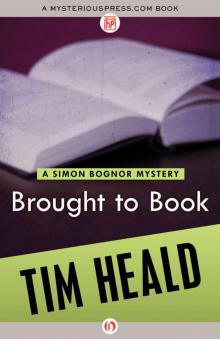 Brought to Book (The Simon Bognor Mysteries)
Brought to Book (The Simon Bognor Mysteries)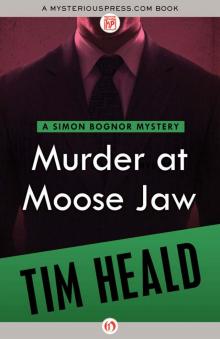 Murder at Moose Jaw (The Simon Bognor Mysteries)
Murder at Moose Jaw (The Simon Bognor Mysteries)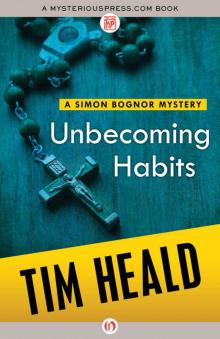 Unbecoming Habits (The Simon Bognor Mysteries Book 1)
Unbecoming Habits (The Simon Bognor Mysteries Book 1)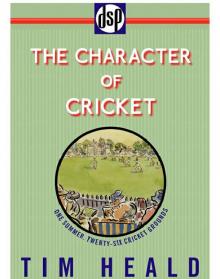 The Character of Cricket
The Character of Cricket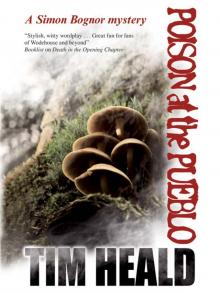 Poison At The Pueblo
Poison At The Pueblo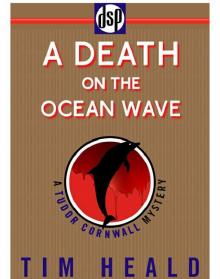 A Death on the Ocean Wave
A Death on the Ocean Wave